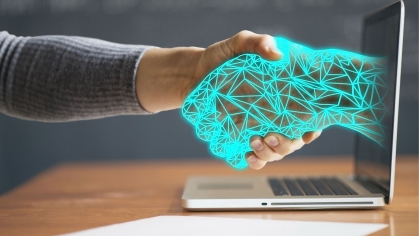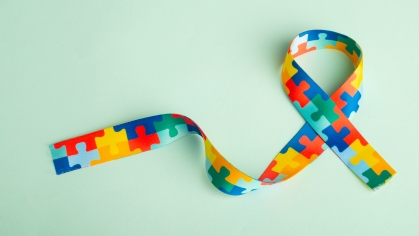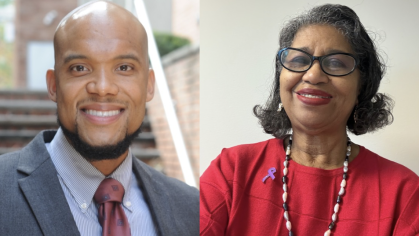Associate Professor of Professional Practice Rebecca Davis, Ph. D., MSW, LCSW is a Representative to the UN for the International Association of Schools of Social Work and Board Member for the Working Group on Girls (UN/NGO). She explains the importance of observing Human Rights Day and what social workers can do to support this year's emphasis on honoring girls' rights as human rights.
December 10, 2023 marks the 75th anniversary of the Universal Declaration of Human Rights (UDHR), which enshrines the inalienable rights that everyone is entitled to as a human being, regardless of race, color, religion, sex, gender, gender identity, language, political or other opinion, national or social origin, property, birth or ability.
This year we place particular emphasis on honoring girls’ rights as human rights. Today, we have the largest adolescent and youth population in the world’s history with 1.8 billion people between ages 10-24. Given that young people face particular challenges in exercising their rights while often being at the forefront of human rights activism, the United Nations has launched a Youth and Human Rights 75 Initiative that will engage youth in a range of information and advocacy events (United Nations, 2023b. An estimated 1.2 billion adolescents are ages 10-19 and make up 16 percent of the world’s population. Half of them are children and adolescents who identify as girls, with the majority living in low and middle-income countries. Empowering the girl child represents an unprecedented opportunity for global progress and achieving the UN’s 17 Sustainable Development Goals (SDGs). Investing in girls yields many returns, including reductions in early pregnancy, increased earning power, and overall healthier families and communities (Temin et al., 2018).
The Legal Framework for Children’s, Girls’, and Women’s Rights
Girls’ rights, codified in the U.N. Convention on the Rights of the Child adopted in 1989, promote non-discrimination, protection from harm and abuse, and full participation in family, social, and cultural life. Barriers to realizing these rights include practices such as female genital mutilation (FGM), sex-selective abortions, and child marriage, each of which is common in geographically specific areas (United States Department of State, 2017, p. 188). In addition, the 1995 Beijing Declaration and Platform for Action, a visionary agenda for the empowerment of women, identified rights of the girl child as critical to the full realization of women’s rights as human rights (United Nations Inter-Agency Network on Women and Gender Equality, 2019). Girls’ rights has been framed in “soft law” (non-legally binding recommendation or guidelines) as a first step towards the main goal of empowering adult women political, socially, and economically, rather than realizing the rights of girls during childhood and adolescence as separate and independent of adult women’s rights (Plan International, 2017, p. 5).
The Girl Child has Risks Across All Countries, No Matter the Economic Status
A 2018 study analyzing marriage license data from 41 U.S. states found that over 200,000 minors (87% girls and 13% boys) were married in the United States between 2000 and 2015 (Tsui et al., 2018). Intentional abortion of female fetuses and female infanticide are common practices in East and South Asian countries. In India, such practices are reinforced by the perception that daughters do not significantly contribute to the family income, and large dowries are expected when girls marry. Global change efforts have had limited success (United States Department of State, 2017).
Empowerment of Girls Transforms Lives
Empowerment is defined as the transformation of power relations, so women and girls gain more control over their lives and futures. Empowerment expands aspirations and choice, while strengthening voice (Temin et al., 2018; Plan International, 2017). Many programs that aim to benefit girls do not ultimately empower them. Some programs combine cash transfers with girls’ clubs, or school-based sexual education with youth-friendly health services but may not be evidence based (Temin et al., 2018). In some programs, girls are “simply” added on to provisions aimed at women (Plan International, 2017, p. 5). A focus on empowerment requires a shift away from seeing girls as beneficiaries to viewing them as agents of change for individual and collective empowerment in their own right. As girls’ voices are strengthened, they speak up and are heard, leading to greater participation, influence, and control in their households and communities (Plan International, 2017).
What Can Social Workers Do?
It is critical that social workers know and understand how investing in and empowering children and adolescents who identify as girls is an investment in achieving the United Nations (2023a) Sustainable Development Goals (SDGs): SDG 3 (Good Health and Wellbeing), SDG 4 (Quality Education), SDG 5 (Gender Equality), SDG 13 (Climate Action, and SDG 16 (Peace, Justice, and Strong Institutions). Many effective youth programs center around safe spaces that allow children and youth to connect, share ideas, and learn new skills. Safe spaces allow for constructive use of their non-school or work time that can lead to healing, empowerment, and resilience (United States Agency for International Development [USAID], 2020). Features that have been identified that promote positive outcomes in safe spaces and youth community programs include physical and psychological safety, clear and consistent structure and appropriate supervision, supportive relationships, opportunities to belong, positive social norms, opportunities for skill building, ethical practice, anonymity, and behavior management processes (Lobo et al., 2010; Eccles & Gootman, 2002). According to Temin et al. (2018), programs that aim to empower girls should be intentionally designed and targeted to girls that are most marginalized and based in pedagogical principles with mentors that emphasize skill-based learning and critical thinking. Raising awareness and capacitating social workers in rights-based programming is necessary for addressing gender-based differentials across the life cycle and full realization of the Universal Declaration of Human Rights.
References
Eccles, J. & Gootman, J. A. (Eds.). (2002). Community programs to promote youth development, National Research Council and Institute of Medicine, Committee on Community-level Programs for Youth, Board on Children, Youth, and Families, Division of Behavioral and Social Sciences and Education, National Academy Press. DOI: https://doi.org/10.17226/10022
Lobo, R., Brown, G., Maycock, B., and McManus, A. (2010). Development of an evaluation framework and evaluation approaches for peer-based youth programs – Interim report. Western Australian Centre for Health Promotion Research, Curtin Health Innovation Research Institute. https://espace.curtin.edu.au/handle/20.500.11937/2568
Plan International. (2017). Girls’ rights are human rights. https://plan-international.org/publications/girls-rights-are-human-rights
Temin, M., Amin, S., Ngo, T. D. & Psaki, S. (2018, December 17). How to give adolescent girls voice, choice, and control. Stanford Social Innovation Review. https://ssir.org/articles/entry/how_to_give_adolescent_girls_voice_choice_and_control#
Tsui, A. and Amico, C. (2018, July 6). Child Marriage in America By the Numbers, PBS FRONTLINE. http://apps.frontline.org/child-marriage-by-the-numbers/
United Nations. (2023a). The 17 Goals. https://sdgs.un.org/goals
United Nations. (2023b). The Universal Declaration of Human Rights turns 75. https://www.un.org/en/observances/human-rights-day
United Nations Inter-Agency Network on Women and Gender Equality. (2019). 25 years after Beijing: A review of the UN system’s support for the implementation of the Platform for Action, 2014-2019. https://www.unwomen.org/sites/default/files/Headquarters/Attachments/Sections/Library/Publications/2020/IANWGE-Review-of-UN-system-support-for-implementation-of-Platform-for-Action-2014-2019-en.pdf
United States Agency for International Development (USAID). (2020). Youth Center Toolkit: Creating resources for safe spaces, youth centers, and after-school programs. YouthPower2: Learning and Evaluation, Making Cents International. https://www.youthpower.org/sites/default/files/YouthPower/files/resources/TOOLKIT_YOUTH_V4_NOVEMBER_15_SM.pdf
United States Department of State, Bureau of International Information Programs. (2017). Global women’s issues: Women in the world today. https://opentextbc.ca/womenintheworld/
This story was created in partnership with Rutgers School of Social Work's Inclusion, Intersectionality, Diversity, Equity, and Advancement (IIDEA) Committee.



